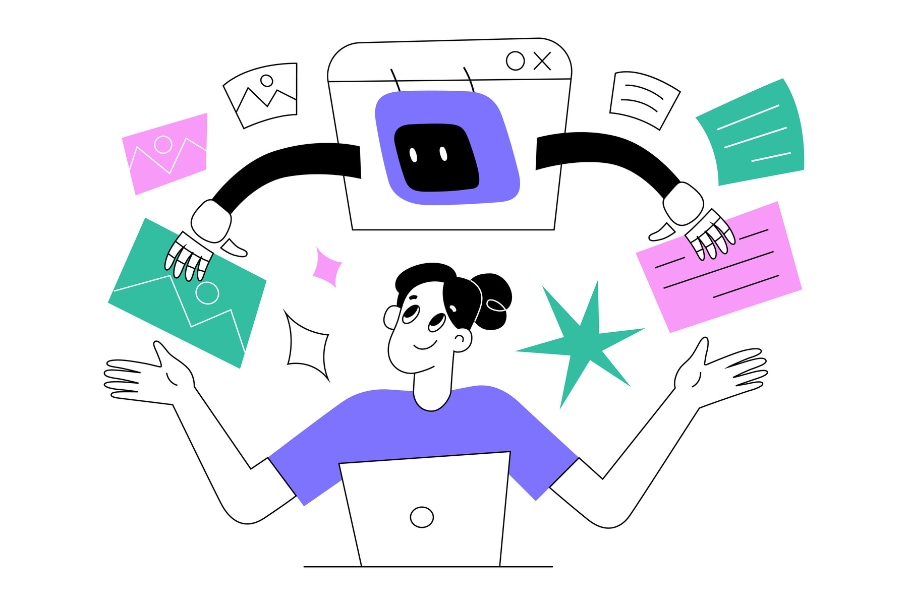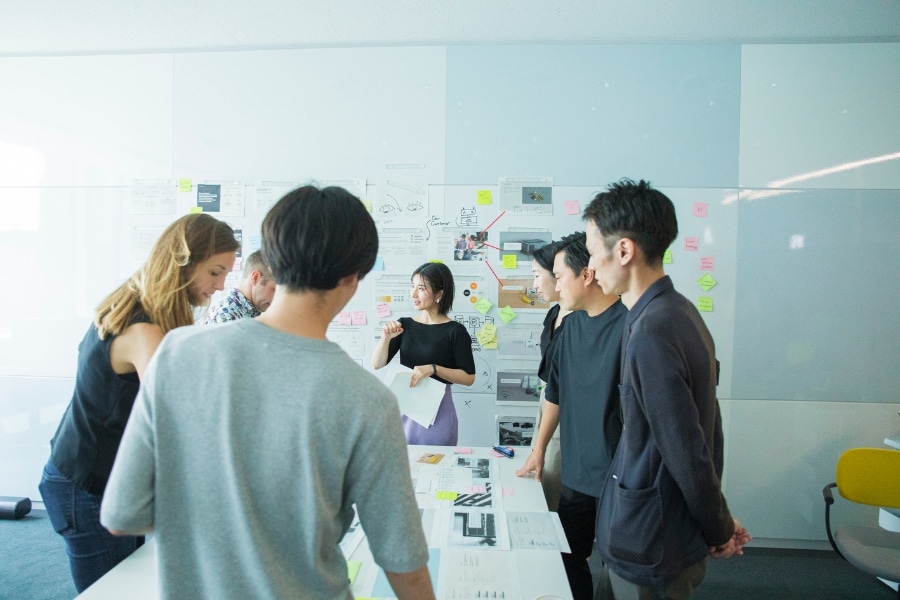Cutting-edge Technology That Will Change Workstyles: "Generative AI," a Topical Issue Represented by ChatGPT
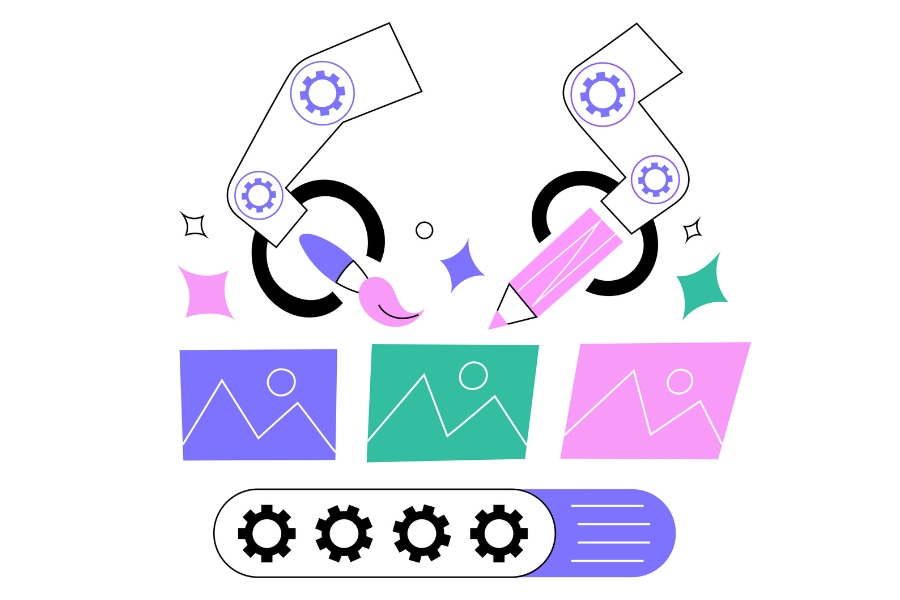
When a question is posed to a device with artificial intelligence (AI), the device responds quickly and automatically, with a human-like tone. With the advent of ChatGPT developed by OpenAI in the U.S., the technology known as "generative AI" has become a topical issue. What makes it different from conventional AI and what kind of future will it usher in? This article is an interview with Jun Yoshida, Head of the Generative AI Center at Hitachi, Ltd.
What is generative AI and how is it different from conventional AI?
--What type of technology is generative AI and can you please explain how it is different from conventional AI?
Yoshida: The main feature of generative AI is that it generates text, images, audio, video, and such just as if they were expressed by a human in accordance with the intended use. As generative AI can be used simply by entering text prompts to generate the desired output, it’s easy for anyone to use.
Conventional AI was developed a case-by-case basis. For example, in a system for detecting equipment failures, AI was created for each device, such as home appliances, cars, and elevators, and specialized knowledge was required to use it. However, the advent of generative AI, such as ChatGPT, has improved usability.
It is now easier to create a wide range of use cases by having a variety of people use it. The "democratization of AI" is a major recent change.
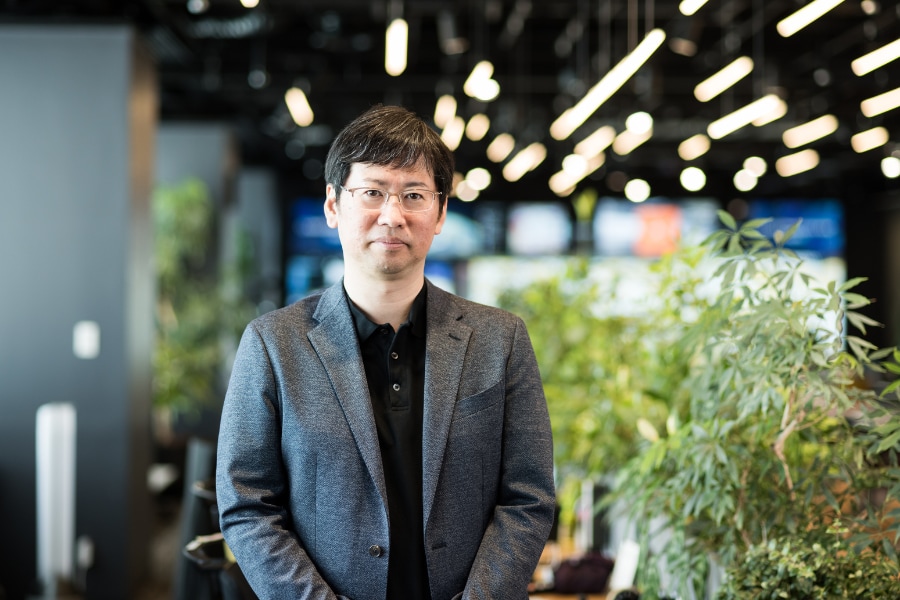
But having said that, it’s not a new technology that is completely different to conventional AI. Rather, I think it is an extension of it. Looking back, research has been conducted in the past that could be called "generative AI."
--Why is generative AI attracting such attention all of a sudden?
Yoshida: Let me explain by going through the history of AI. There have been repeated booms in AI research and development since the first boom in the late 1950s and 1960s. At the start of the first boom, the focus was on computers doing exploration and reasoning. However, the computers could only answer simple, specific problems, such as mathematical proof, and they could not handle complex, real-world problems that required specialized knowledge.
Then, in the 1980s, the second boom occurred when computers were able to store real-world facts, common sense, and experience in a form that could be deciphered. Computers that had specialized knowledge were able to reason about complex problems. Although it was thought that this boom would continue, it ended because computers relied on human input of knowledge.
Then came the third boom in the 2010s with advances in machine and deep learning technology, in which computers learned automatically. Generative AI emerged in the 2020s during the third boom. Because of its usability, which allows anyone to use it easily, proposals for its utilization can be made from the bottom up, by workers. This could greatly accelerate the digital transformation (DX) of companies.

--Are there any precautions that should be taken when using generative AI?
Yoshida: Yes, there are a few: Firstly, there might be potential copyright issues when using generative AI like ChatGPT to learn from information published on the internet. Moreover, if social media posts are contained in the training data, information that can identify the sender may be generated, which may lead to privacy violations. Ethical considerations must also be made for information generated in relation to gender and religion.
Users should also be wary of a phenomenon known as "hallucination": the generative AI responds with plausible information even though the generated information is not true. Therefore, when using generated information, it is necessary to check the facts and clearly state that the information is output from generative AI.
Generative AI: Changing workstyles
--What ways can you think of to use generative AI?
Yoshida: Generative AI can be used to create a base of materials when planning a project. It can also be used in sales and marketing, for example, to generate a large number of logos and product introductions for an e-commerce site, and it can keep the information that gets the best response.
It can also be used to compile some of the data from satisfaction surveys and other questionnaires enabling data scientists to work on more-advanced analysis. Additionally, if past assets, such as product design documents, can be easily retrieved by asking generative AI, we can aim for further improvements in productivity and quality.
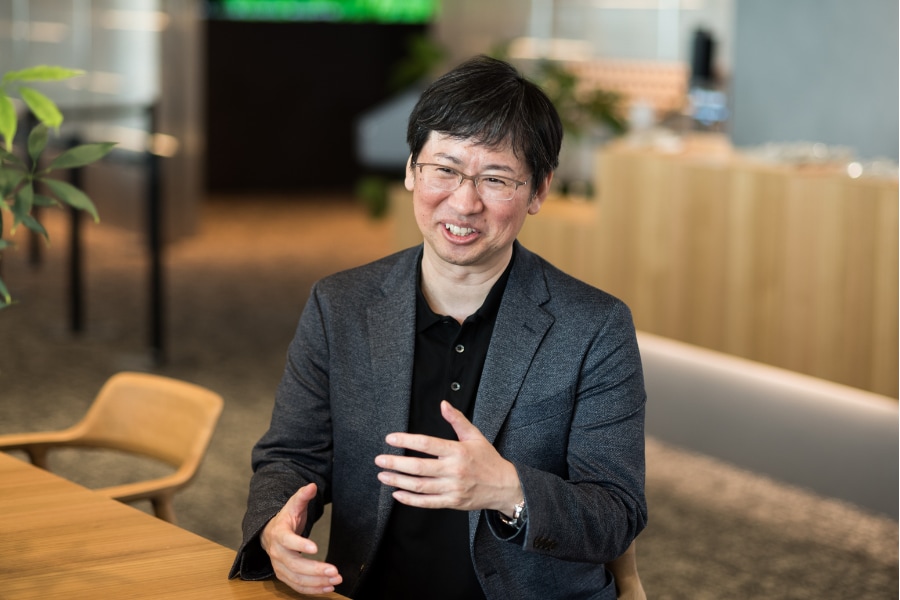
--So generative AI has the potential to change the way we work?
Yoshida: I believe that it will change not only the way we work but also the way we train young talents. At Hitachi, Ltd., instructors are assigned to talents until their second year of employment, but if the knowledge of Hitachi as a whole can be shared through generative AI, in addition to the instructor's own personal competence, human resources development will also be accelerated.
Young talents are often unable to ask their instructors or supervisors questions because they look busy or it’s not a good look to do so. Some young talents are beginning to turn to generative AI to ask questions. Before asking an talent that's senior to them a question, they consult generative AI and then ask the senior talent a question. The speed at which young talents are nurtured may also change if they master the use of the generative AI.
--Will generative AI replace instructors? What should we do as humans?
Yoshida: Senior talent and supervisors will always have a role in guiding new talents, as they cannot judge the veracity of the results produced by the generative AI. Work involving humans will not disappear. I believe that, even among routine tasks, there will remain areas that require human input and that humans will take on more-specialized tasks while the efficiency of AI improves. The final check by humans will also be necessary, as generative AI could be wrong.
Human-centric use of generative AI
--How is Hitachi handling generative AI?
Yoshida: In 2021, Hitachi, Ltd. established the “AI Ethical Principles,” and all AI-related projects have been rigorously confirmed that they comply with these principles. Decisions on areas that are difficult to determine are made based on the advice of external experts with emphasis here also on a human-centric perspective.
In 2023, the Generative AI Center was established with data scientists, researchers, and security experts as an organization to gather and promote knowledge of generative AI.
--What is the role of the Generative AI Center?
Yoshida: Guidelines have been established to avoid the risks that I mentioned earlier and to ensure safe use. A lot of internal guidelines are reviewed annually, but because trends change quickly in generative AI, we update them monthly.
Along with maintaining the environment, we are also trying to disseminate the use of the system. We are currently examining hundreds of use cases proposed by various divisions and verifying the case for company-wide deployment.
Since the use of AI and the strictness of regulations differ from country to country, we are collaborating with Hitachi's overseas subsidiaries, such as GlobalLogic and Hitachi Vantara, to gather information about each region while considering Hitachi's overall policy.
In tandem with these internal developments, we are also considering what kind of generative AI-related services we can provide to our customers.
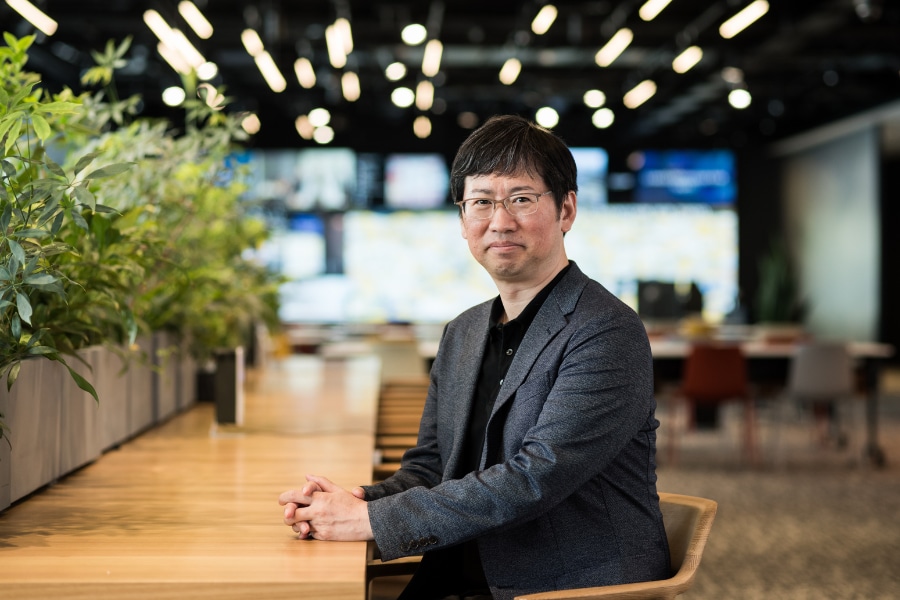
--What kind of future do you foresee at the end of the generative AI boom?
Yoshida: I predict two patterns: One is a pattern in which the boom ends and generative AI is no longer used, and the other is a pattern in which the boom does not end and generative AI permeates society. In Hitachi's case, I believe that generative AI will be used diligently and in a widespread manner within the company, with a human-centric way.
The integration of Lumada, Hitachi's digital solution, and generative AI is also moving forward. As knowledge is passed on to the next generation and as new discoveries are made from the accumulated knowledge, undoubtedly even-better solutions will be developed.

